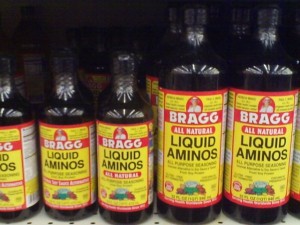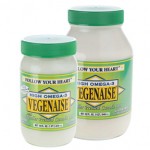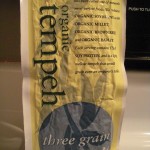
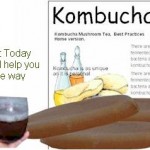

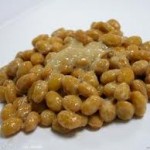
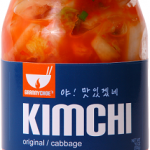
- Kombucha Mushroom Natto Enzyme
-
Fermenting Vegetables <Click to see video
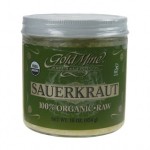
- Sauerkraut has 12 Trillion live organisms per serving
Probiotics Vital for Wellness
What Are Probiotics?
By Probiotics.org
Probiotics are live microorganisms thought to be healthy for the host organism. According to the currently adopted definition by FAO/WHO, probiotics are: “Live microorganisms which when administered in adequate amounts confer a health benefit on the host”. Lactic acid bacteria (LAB) and bifidobacteria are the most common types of microbes used as probiotics; but certain yeasts and bacilli may also be helpful. Probiotics are commonly consumed as part of fermented foods with specially added active live cultures; such as in yogurt, soy yogurt, or as dietary supplements.
Etymologically, the term appears to be a composite of the Latin preposition pro (“for”) and the Greek adjective βιωτικός (biotic), the latter deriving from the noun βίος (bios, “life”). At the start of the 20th century, probiotics were thought to beneficially affect the host by improving its intestinal microbial balance, thus inhibiting pathogens and toxin producing bacteria. Today, specific health effects are being investigated and documented including alleviation of chronic intestinal inflammatory diseases, prevention and treatment of pathogen-induced diarrhea, urogenital infections, and atopic diseases.
21 Amazing Facts About Probiotics
1) Probiotics In Our Body Outweigh Our Brain
The typically human brain weights about 3 pounds, and a healthy human body will have over 3.5 pounds of probiotic bacteria and organisms (according to Casey Adams Ph.D. The fact that our heart weights only 0.7 pounds, our liver weights about 4 pounds, makes our probiotic bacteria one of the largest organs in our body.
2) There Are 10 Times More Probiotics Than Cells In Our Body
In a healthy person, there are more than 100-300 Trillion probiotic bacteria and yeast, compared to only 10 trillion cells in our body. According to Mary Ellen Sanders, if the bacteria in our body were laid end to end, they would encircle the globe 2.5 times.
3) The Probiotics Market Is Huge
Sauerkraut has 12 Trillion live organisms per serving
According to MARKETSandMARKETS, probiotics is a 16 billion dollar market. Moreover, as of 2008, there were more than 500 probiotic food and beverage products have been introduced in the last decade. And these numbers are only expected to grow as holistic health treatments become ever more pervasive.
4) Probiotics Live Throughout Our Entire Body (Not Just Our Stomach!)
The largest number of probiotics live in the colon, but billions also live in the mouth, oral cavity, nasal cavity, the esophagus, around the gums, in the pockets of our pleural cavity (surrounding our lungs). They dwell within our stomach, our intestines, within the vagina, around the rectum. within joints, under the armpits, under the toenails, between the toes, urinary tract, inside our urinary tract and many other places!
5) The Appendix Is Not Useless – It Incubates Probiotics
In the past, the appendix was largely thought to be useless. Appendicitis, a life-threatening condition, would call for removal of the appendix. In 2007, Randal et al. at Duke University conducted research into the vermiform appendix. The researchers observed that when the body was under attack by pathogens, the appendix would release probiotic bacteria that would perfectly counter the specific type of invaders. The appendix does this by releasing them into the cecum when the body is infected.
6) Probiotics Fight Cancer, Colds and Constipation
It may not surprise you to hear that probiotics can reduce constipation (Italy, Amenta et al. 2006). But what may surprise you, is that probiotics play a role in cancer. They have been shown stimulate production of anti-cancer chemicals (Hatakka et al. 2008). The probiotics, Lactobacillus casei, have also been shown in Tokyo to reduce the risk of bladder cancer, depending on frequency and dosage (Ohashi et al. 2002).
Numerous probiotics have been shown to fight viruses such as colds, the flu, rotavirus, herpes and ulcers. In New Delhi, 100 children ages 2-5 were given L. acidophilus for 6 months. These children have fewer incidences of colds, flu, diarrhea and fever than the placebo group (Saran et al. 2002).
7) There Are More Than 100 (known) Benefits To Taking Probiotics
According to the book, Probiotics by Casey Adam Ph.D., there are more than 100 benefits to supplementing with probiotics. Hundreds of studies have shown different species of probiotics confer different health benefits.
However, we must take these probiotics in their proper context. For example, almost every probiotic study requires the patient to take large, therapeutic doses, for at least two months. Often times, the studies conferred the benefits after an entire year of daily, large dose supplementation.
8) Probiotics Are Responsible For 70% Of Our Immune Response
According to Casey Adams Ph.D., probiotics play a role in 70-80% of our immune response. Probiotics stimulate everything from T-cells to macrophages. Probiotics also activate cytokines and phagocytic cells to coordinate the immune response.
9) Probiotics Produce Antibiotic Chemicals
In the book Probiotics, Protection Against Infection, Casey Adamas writes:
“To protect against pathogens, [probiotics] will produce a number of natural antibiotics designed to reduce the populations of [pathogenic bacteria]…”
Moreover, these antibiotic substances are perfectly tuned to kill the invading pathogens. And if the pathogens become resistant to that chemical, then the probiotics will change strategies and produce a new, more effective antibiotic chemical.
Contrast this dynamic probiotic strategy to our static, oral antibiotics which must be phased out every few years (as pathogens evolve resistance). While we may be able to continue to discover new antibiotic substances, nature will always win in the long term. The bacteria will always evolve resistance. This is illustrated by the fact that bacteria can even survive in nuclear waste!
10) Antibiotics Nuke Our Body’s Immune System
It is well known that antibiotics kill bacteria and can make us better. But what isn’t well known, is that antibiotics also kill our good bacteria. Since probiotics comprise 70-80% of our immune response, antibiotics will kill our immunity.
The moment our probiotics are gone, opportunistic parasites, fungi and pathogenic bacteria rush in to fill the ecological void. Moreover, this use of antibiotics will create drug resistant bacteria that can’t be defeated by antibiotics.
11) Probiotics Easily Kill Antibiotic-Resistant Bacteria
The use of antibiotics can create antibiotic resistant, super bugs. In fact, MRSA (multi-drug resistant Staphylococcus aureus) is immune to many different antibiotics…and in some cases they are immune to all antibiotics known to man.
However, probiotics can defeat these super bugs with ease. Probiotic bacteria and pathogenic bacteria have been fighting for billions of years. And healthy humans have the perfect environment for probiotic bacteria to beat pathogenic bacteria. The fact that humans have been surviving before the invention of antibiotics is proof of how powerful probiotics are.
12) Probiotics Will Be The 21st Century’s Antibiotics
Valery V. Smirnov writes,
“… 21st century probiotics will successfully rival traditional drugs on the pharmaceutical market, especially those used for disease prevention purposes…”
The profound point Dr. Smirnov is making is that probiotics will be the antibiotics of the 21st century. This is because their effective medical implementation will revolutionize our perspectives on disease in the way antibiotics did before.
13) 400 Strains Of Probiotics Live In Our Bodies
According to numerous research studies, there are well over 400 probiotic strains resident in our bodies. Some of these probiotics are permanent residents, and others are transient. Interestingly, only 20 strains account for 75% of the mass of bacteria that live in our bodies.
Numerous scientists also argue that the combined DNA of our probiotic residents are more important to our survival than our own DNA.
14) Probiotics Are Bacteria And Fungi That Make Us Healthy
The World Health Organization probiotics definition is “live microorganisms which when administered in adequate amounts confer a health benefit on the host.” These probiotic organisms can be yeasts (fungi), good bacteria or even organisms commonly found in soil.
The deference between normal pathogenic bacteria or candida and probiotics, is that the probiotic organisms have a symbiotic relationship with our bodies. Our bodies and probiotic organisms have formed a mutual defense treaty. And while we are extremely fearful of bacterium and fungi, specific probiotics strains are very beneficial to our health.
15) Probiotic Foods Have Been Healing For Millennia
There are numerous traditional probiotic foods that are extremely tasty and healthful. These foods have been restoring health for millennias.
Foods like natto, miso, kimchi, tempeh, sauerkraut, kefir, kombucha and lassi all have very rich cultural heritages and medicinal benefits.
16) Probiotics Can Decrease Lactose Intolerance
In a 1996 study, Jiang et al. studied milks containing B. Longum grown in a medium rich in lactose. He found that when lactose intolerant individuals consumed this special milk, they showed significantly fewer symptoms of lactose intolerance. They have been numerous studies that have shown probiotics to be helpful in decreasing lactose intolerance.
17)Are You Getting Your Vitamins? Better Get Your Probiotics.
It has been proven that probiotics produce a huge number of vitamins, such as:
- Vitamin A
- Vitamin K
- Vitamins B1-B3, B5-B7, B9, B12
- Essential Fatty Acids
So perhaps the need for B-vitamin supplementation is really a call for proper probiotic colonization. I look forward to the day when probiotic companies and organic food companies put vitamin companies out of business.
Additionally, probiotics also increase the digestibility, bioavailability and processing of a large number of nutrients, including:
- copper
- calcium
- magnesium
- iron
- manganese
- potassium
- zinc
- proteins
- fats
- carbohydrates
- sugars
- milk
- phytonutrients
- cholesterol
These lists are both by Casey Adams, Ph.D. in his book, “Probiotics – Protection Against Infection”.
18) Supplemented Probiotics Don’t Remain In The Body
It is interesting to note that no study has shown supplemented probiotic strains remain in the body for more than two weeks. At the National University of Signapore, Mah et al. infants were given probiotic supplements for the first 6 months of her life. During these 6 months of supplementation, the supplemented probiotic strains were present in the infants’ feces. However, within weeks of stopping the supplementation, the probiotic strains were no longer found in the feces.
These results of this study and the results of other research suggest that supplemented probiotics assist the our native probiotic strains. The foreign probiotic strains form a beachhead for our own native probiotics, and allow our probiotics to proliferate. This situation is analogous to a foreign arming invading a country, fighting one “evil” faction, and allowing another “good” faction time to proliferate.
19) Vaginal Birth Is Our First Dose of Probiotics
It’s no secret that a healthy, loving mother is key to a healthy child. And a healthy mother will have a vagina lined with probiotics to fend off invaders. What isn’t well known, is that when a baby experiences a vaginal birth, the baby gets it first dose of probiotics. In fact, 60% of vaginal births will give infants their first probiotic inoculation of Bifidus Infantis. However, only 1% of cesarean section births will give infants B. Infantis innoculation, according to “Probiotics” by Casey Adams.
After getting a dose of probiotics from vaginal birth, consumption of breast milk gives more probiotic inoculation. In fact, mother’s colostrum has up to 40% probiotic content.
20) Probiotics Are Good For Infants
In a 2004 study, Saavedra et al. gave infants, average age 2.9 months, B. lactis or S. thermophilus for 210 days. The infants who were given the probiotics have a lower frequency of colic and needed fewer antibiotics compared to the control group.
In an Estonian study by Vendt et al. 2006, preterm infants L. rhamnosus GG until they were six months old. The infants given probiotics had grown more than the placebo group.
21) Probiotics Are Vital For Women’s Health
Both oral probiotics and douching supplementation can prevent and cure vaginitis and vaginosis. An interesting study on probiotics and vaginosis was conducted in a 2007 by the University of Milan (Drago et al).They found that after a 6 day daily douche of Lactobacillus acidophilus and Lactobacillus paracasei F19, 92.5% of women had their vaginosis cured. The fishy order was cured in all women. The pH levels of women were normalized to 4.5 in 34 out of 40 women.
Probiotics has also been shown to reduce mastisis. Back to top
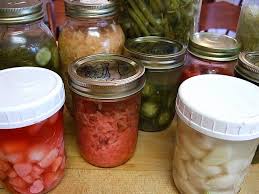 Unlock the True Potential of Vegetables
Unlock the True Potential of Vegetables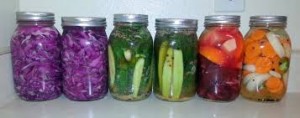
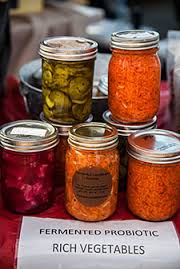
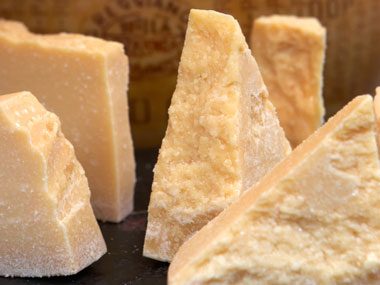

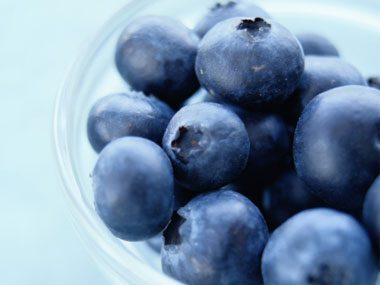
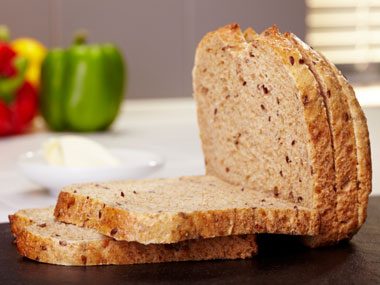
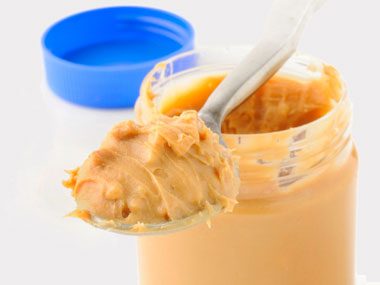


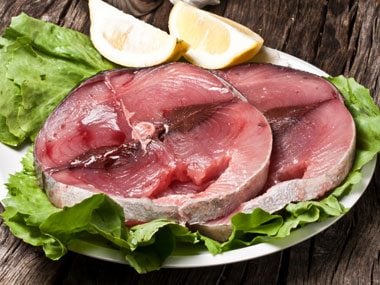

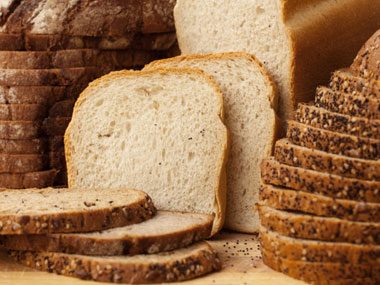
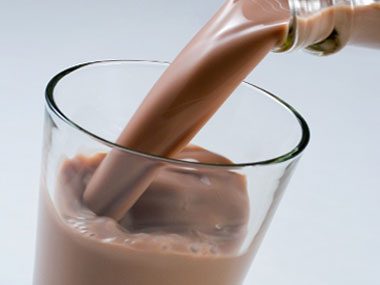

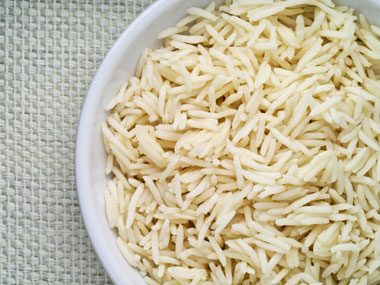




















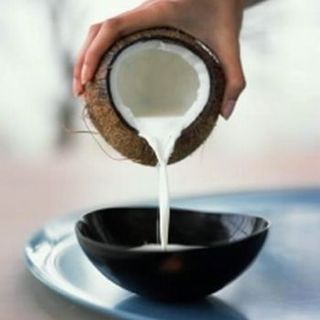

 View Dr.Mercola
View Dr.Mercola